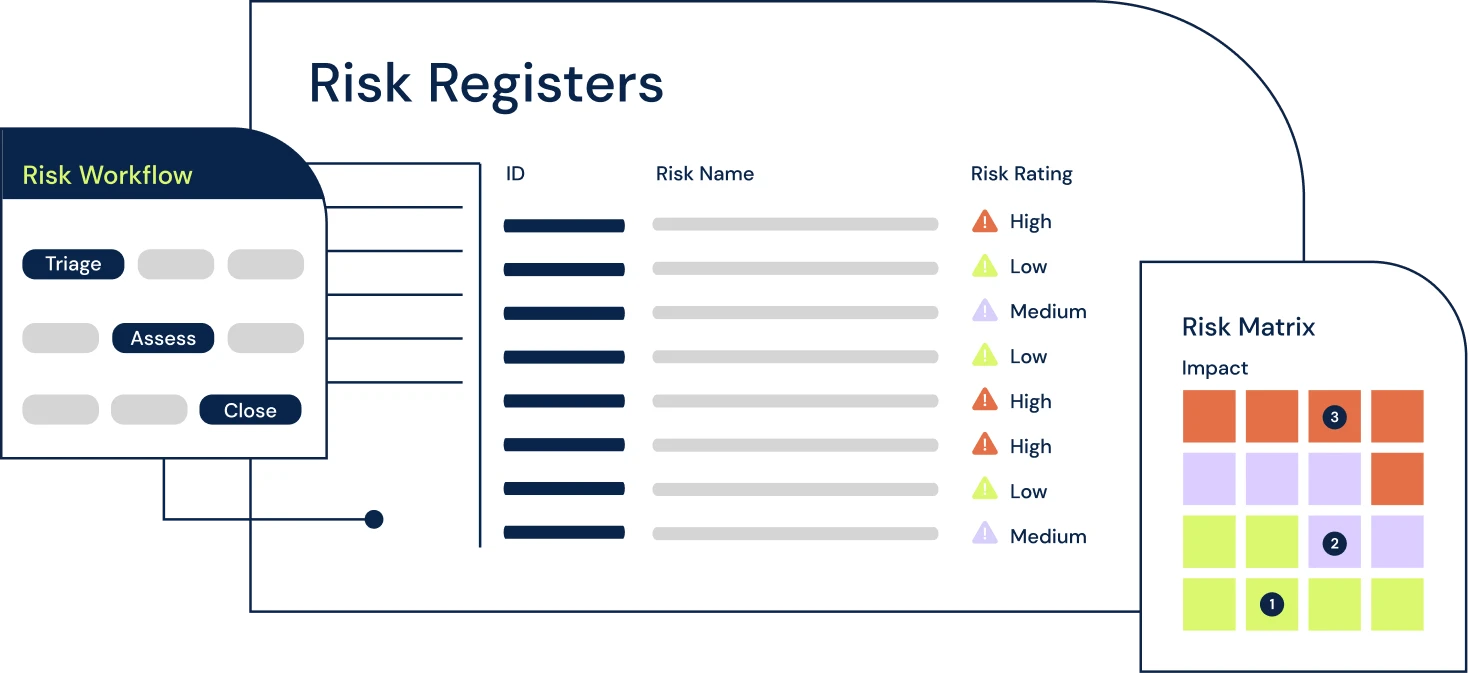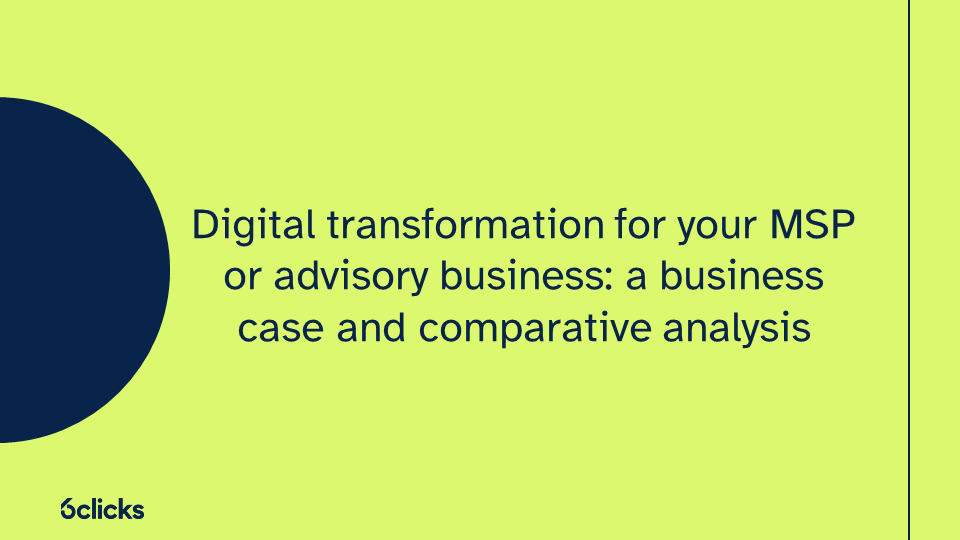Is ISO 27001 certification hard?
Explore some of our latest AI related thought leadership and research
6clicks has been built for cyber risk and compliance professionals to automate and streamline security compliance, IT risk management, vendor risk management, incident management, and more.
Learn more about our Hub & Spoke architecture, Hailey AI engine and explore the other content in our platform here.
What is ISO 27001?
ISO 27001 is an international standard that provides guidelines and best practices for implementing an Information Security Management System (ISMS). It is designed to help organizations establish, implement, maintain, and continually improve their information security processes and controls. The standard aims to protect the confidentiality, integrity, and availability of an organization's information by managing its security risks systematically. ISO 27001 certification is a formal recognition that an organization meets the requirements of the standard. It involves undergoing a rigorous certification process and demonstrating compliance with a wide range of security controls and management procedures. Achieving ISO 27001 certification can be challenging for organizations as it requires careful planning, preparation, and implementation of security policies and procedures to ensure compliance with the standard's requirements.
Overview of the certification process
Achieving ISO 27001 certification demonstrates an organization's commitment to information security management. While the process may seem daunting, proper preparation and compliance with the standard can make it more manageable.
The certification process begins with a thorough understanding of ISO 27001 requirements, including the development and implementation of an Information Security Management System (ISMS). This involves identifying security risks, establishing security objectives, and implementing appropriate security controls.
Once the ISMS is in place, organizations undergo an initial certification audit conducted by an accredited certification body. This audit evaluates the effectiveness of the security management processes and controls in place. If any non-conformities are identified, organizations must address them before moving forward.
Annual surveillance audits and a recertification audit every three years ensure continued compliance and improvement. These audits assess the ongoing effectiveness of the ISMS and verify that it meets the requirements of ISO 27001.
Auditors play a crucial role in evaluating an organization's ISMS and determining its compliance with ISO 27001. They assess the implementation of security processes, review documentation, conduct interviews, and perform on-site inspections.
Benefits of obtaining an ISO 27001 certification
Obtaining an ISO 27001 certification offers numerous benefits to organizations seeking to strengthen their information security management. This internationally recognized certification demonstrates to stakeholders, clients, and partners that the organization has implemented robust security controls and processes to protect valuable information assets. It also provides a competitive advantage by positioning the organization as a trusted and reliable partner in today's increasingly interconnected and vulnerable digital landscape. ISO 27001 certification helps mitigate security risks, prevents data breaches, and safeguards intellectual property. It instills confidence in customers, enhances brand reputation, and can open doors to new business opportunities. Additionally, the certification promotes a culture of security throughout the organization, driving continuous improvement and adherence to best practices. Overall, ISO 27001 certification is a gold standard in information security management that yields significant returns on investment and strengthens an organization's cybersecurity posture.
Improved security practices
While ISO 27001 certification can be a rigorous process, it offers numerous benefits for organizations looking to enhance their security practices. Implementing the ISO 27001 information security framework helps organizations establish a robust system for identifying, assessing, and treating potential security risks. This involves conducting extensive risk assessments, developing cybersecurity policies, implementing effective security controls, and establishing processes and tools to manage information security.
By obtaining ISO 27001 certification, organizations can significantly improve their overall security posture. The certification process prompts organizations to assess their current security practices and identify areas for improvement. It encourages organizations to develop and implement comprehensive security policies, ensuring that security objectives are well-defined and aligned with industry best practices.
ISO 27001 certification also aids in the identification and mitigation of potential threats. By conducting regular internal audits and having annual surveillance audits by an external certification body, organizations can monitor and evaluate the effectiveness of their security controls. Through this continuous process of evaluation and improvement, organizations can stay ahead of emerging security risks and adapt their security programs accordingly.
Furthermore, ISO 27001 certification fosters a culture shift within organizations. It promotes the involvement of senior leadership and the internal team in the development and maintenance of the security program. This encourages a proactive approach to security and helps embed security practices at every level of the organization.
Enhanced customer confidence
ISO 27001 certification plays a crucial role in enhancing customer confidence in an organization's information security practices. By obtaining this certification, organizations demonstrate a high level of commitment to protecting sensitive information and mitigating security threats.
In today's digital age, customers are increasingly concerned about the security of their personal and sensitive information. ISO 27001 certification assures customers that the organization has implemented and maintains a robust information security management system. This certification signifies that the organization has undergone rigorous assessments, including risk assessments and security controls, to ensure the confidentiality, integrity, and availability of customer data.
ISO 27001 certification also demonstrates the organization's commitment to international best practices for information security. It is widely recognized as the gold standard for information security management systems. By aligning with ISO 27001, organizations can assure customers that they adhere to globally accepted security guidelines and practices.
Furthermore, ISO 27001 certification helps organizations minimize the risk of data breaches and cyber attacks. By implementing security measures and controls outlined in the ISO 27001 standard, organizations can significantly reduce the likelihood of unauthorized access, loss, or misuse of sensitive information. This, in turn, builds trust with customers and stakeholders, who can have confidence that their information is being handled securely.
Increased cost savings
Obtaining an ISO 27001 certification can lead to increased cost savings for organizations. Firstly, the certification helps minimize the risk of data breaches and cyber attacks, which can result in significant financial losses. By implementing the security measures and controls outlined in the ISO 27001 standard, organizations can avoid costly incidents and the associated expenses of remediation, legal fees, and reputational damage.
Additionally, ISO 27001 certification allows organizations to streamline their operations and improve efficiency. The certification process requires organizations to evaluate and optimize their security processes, identify areas for improvement, and implement necessary changes. By doing so, they can eliminate unnecessary expenses, reduce waste, and enhance overall productivity.
Furthermore, ISO 27001 certification can result in competitive advantages and increased revenue. Customers are increasingly seeking out organizations that prioritize and invest in information security. By achieving the gold standard of ISO 27001, organizations can attract new customers, retain existing ones, and potentially command higher price points for their products or services.
While there are costs associated with obtaining ISO 27001 certification, such as external audits and training, the long-term financial benefits outweigh these initial expenses. Ultimately, the increased cost savings, reduced audit costs, increased efficiency, and competitive advantages that come with ISO 27001 certification make it a worthwhile investment for organizations.
Improved efficiency & productivity
Obtaining an ISO 27001 certification can greatly contribute to improved efficiency and productivity within an organization. By implementing the ISO 27001 standard, businesses undergo a thorough evaluation and optimization of their security processes and procedures. This evaluation allows them to identify potential areas for improvement and implement necessary changes.
Streamlining processes through the ISO 27001 certification helps eliminate redundancies and unnecessary expenses, resulting in improved operational efficiency. By identifying and eliminating inefficiencies, organizations can reduce waste and optimize resource allocation. This allows employees to focus their efforts on value-added tasks and ultimately increases overall productivity.
Additionally, the implementation of a comprehensive security policy and organization, along with incident management components, can further contribute to increased productivity. A well-defined security policy ensures that employees understand their roles and responsibilities related to information security, reducing the likelihood of mistakes and enhancing operational efficiency. Effective incident management processes enable swift resolution of security incidents, minimizing downtime and maximizing productivity.
Greater market recognition & exposure
Obtaining an ISO 27001 certification brings with it greater market recognition and exposure for organizations. This certification, recognized globally, demonstrates that an organization has implemented a robust information security management system (ISMS) that meets the international standard.
ISO 27001 certification enhances an organization's reputation by showcasing its commitment to protecting sensitive information. It distinguishes the organization from its competitors by demonstrating a proactive approach to managing information security risks. This certification is highly regarded and trusted by businesses and customers globally, giving the certified organization a competitive edge.
With ISO 27001 certification, organizations can build trust with their customers. Customers recognize the value of having their information protected and are more likely to trust organizations that have achieved this certification. ISO 27001 certification gives customers the assurance that their data will be handled securely, strengthening the relationship between the organization and its customers.
Furthermore, ISO 27001 certification increases market visibility for organizations. With this certification, organizations gain access to a wider range of potential customers who specifically look for certified partners. The certification acts as a marketing tool, attracting customers who prioritize information security and are more likely to choose a certified organization over non-certified competitors.
Challenges of achieving an ISO 27001 certification
Obtaining an ISO 27001 certification requires organizations to undergo a rigorous process that can present various challenges. One of the main challenges is conducting internal audits to ensure compliance with the standard's requirements. These audits involve assessing the organization's security controls and management systems to identify any gaps or weaknesses that need to be addressed. Additionally, organizations must navigate the certification audit conducted by a certification body, which evaluates the effectiveness of their security program. This can be a demanding process that requires extensive preparation and cooperation from all departments. Another challenge is conducting a thorough risk assessment to identify and evaluate potential security risks. Organizations must develop a comprehensive risk treatment plan to mitigate these risks effectively. Implementing robust security policies and procedures, training employees on security practices, and adhering to ISO standards can also pose significant challenges. Finally, organizations must undergo regular external surveillance audits to maintain their certification, which involves continuous monitoring and improvement of their security program. Despite the challenges, organizations that achieve ISO 27001 certification can benefit from enhanced security, improved customer trust, and a competitive advantage in the market.
Understanding the standards & requirements
Understanding the standards and requirements for ISO 27001 certification is essential for organizations aiming to achieve this prestigious certification. ISO 27001 is an international standard that outlines best practices for establishing, implementing, maintaining, and continually improving an information security management system (ISMS).
The standard comprises several mandatory clauses that organizations must adhere to in order to obtain certification. These clauses include defining the scope of the ISMS, conducting a risk assessment, implementing appropriate security controls, establishing a risk treatment plan, and monitoring and reviewing the ISMS. Additionally, organizations must demonstrate their commitment to continuously improving their information security processes.
Before undergoing an external audit for ISO 27001 certification, certain key requirements must be in place. This includes having a set of documented security policies and procedures, conducting internal audits to ensure compliance with the standard, and developing a culture of awareness and accountability within the organization.
The complexity of these requirements should not be underestimated. It requires a comprehensive understanding of the ISO 27001 standard and its implications for the organization. Adhering to these requirements is crucial for organizations to effectively manage security risks, protect intellectual property, comply with security regulations, and gain a competitive advantage in today's digital landscape.
Developing a comprehensive risk treatment plan
Developing a comprehensive risk treatment plan is a crucial step in achieving an ISO 27001 certification. This plan outlines the organization's approach to identifying, assessing, and mitigating risks to its information security management system (ISMS). It ensures that potential risks are identified and appropriate measures are implemented to minimize their impact on the organization.
The key components of a risk treatment plan include:
- Description of risks: The plan should clearly define the risks that the organization faces in terms of information security. This involves identifying the potential threats, vulnerabilities, and potential impacts on the organization's assets.
- Treatment options: The plan should outline the various treatment options available for each identified risk. This may include implementing technical controls, developing security policies and procedures, conducting employee training, or outsourcing certain security functions.
- Accountability for risk and risk mitigation: The plan should assign responsibility to specific individuals or teams within the organization for monitoring and mitigating each identified risk. This ensures that there is clear accountability for taking proactive measures to address the risks.
- Completion timelines: The plan should include timelines for implementing the chosen risk treatment options. This helps in effectively managing resources and ensuring that risk mitigation activities are carried out in a timely manner.
By developing a comprehensive risk treatment plan, organizations can demonstrate their commitment to effectively managing information security risks. This not only helps in achieving ISO 27001 certification but also ensures that the organization's valuable assets and data are protected from potential threats.
Implementing security controls & policies
Implementing security controls and policies is a crucial step in achieving ISO 27001 certification. The key steps involved in this process include:
1. Identify security risks: Conduct a thorough risk assessment to identify potential security risks to the organization's information assets. This involves evaluating the impact and likelihood of various threats and vulnerabilities.
2. Develop security controls: Based on the results of the risk assessment, develop a set of security controls that are appropriate for managing and mitigating the identified risks. These controls may include technical measures, such as firewalls and encryption, as well as administrative and physical controls, such as access controls and security awareness training.
3. Document security policies: Document the organization's information security policies, which outline the rules, responsibilities, and procedures for ensuring the confidentiality, integrity, and availability of information assets. These policies should be aligned with the security controls implemented.
4. Implement controls and policies: Implement the identified security controls and policies across the organization's infrastructure and operations. This may involve configuring technical controls, conducting employee training, and establishing processes for enforcing and monitoring compliance.
5. Continuously monitor and improve: Regularly monitor and assess the effectiveness of the implemented controls and policies. This includes conducting internal audits and reviews to identify any gaps or weaknesses. Continuously improve the security program by addressing any identified issues and adapting to evolving security threats and regulatory requirements.
Developing a comprehensive risk treatment plan is essential in this process as it helps identify and mitigate security risks effectively. The plan outlines the identified risks, treatment options, responsibilities, and timelines for implementing the chosen treatments. It provides a roadmap for managing security risks and ensures that appropriate measures are in place to protect information assets.
Compliance with regulations and standards is crucial for maintaining the security of information assets. Organizations must regularly monitor their compliance to ensure ongoing adherence to ISO 27001 requirements and other applicable regulations. This involves conducting regular internal audits and assessments, as well as external audits by certification bodies. Compliance monitoring helps identify any non-compliance issues, allows for timely corrective actions, and provides assurance to stakeholders that the organization is committed to information security.
Monitoring compliance with regulations & standards
Monitoring compliance with regulations and standards is a critical aspect of the ISO 27001 certification process. It ensures that organizations consistently meet the requirements of this international standard for information security management.
Regular internal and external audits play a vital role in monitoring compliance. Internal audits assess the organization's adherence to ISO 27001 controls, policies, and procedures. They help identify any gaps or non-compliance issues, providing an opportunity for corrective actions to be taken promptly.
Employee security training is another essential component of compliance monitoring. It ensures that employees are aware of their responsibilities and understand the necessary security measures. Regular training sessions enable employees to stay updated on the latest security practices and are better equipped to handle security threats.
ISMS policy updates are also crucial for maintaining compliance. As threats and technology evolve, policies need to be reviewed and updated to ensure they remain effective. Regularly reviewing and updating ISMS policies help align them with current security requirements and best practices.
Lastly, changes to the risk assessment process contribute to maintaining certification. By reassessing and analyzing the organization's security risks, any new threats or vulnerabilities can be identified and appropriate controls implemented. This proactive approach helps prevent security incidents and ensures ongoing compliance with ISO 27001.
Preparing for an ISO 27001 certification audit
Preparing for an ISO 27001 certification audit requires thorough planning and adherence to key steps in the certification process. The organization must begin by conducting a comprehensive risk assessment to identify potential security risks and vulnerabilities. Based on the assessment, a risk treatment plan should be developed and implemented to address and mitigate these risks. It is crucial to establish and maintain robust security controls and management practices, such as documenting security policies and procedures, conducting regular internal audits, and providing employee security training. Additionally, the organization should ensure compliance with relevant legal, regulatory, and contractual requirements. Regular monitoring, reviewing, and updating of the information security management system (ISMS) policies and practices contribute to ongoing compliance and a successful ISO 27001 certification audit. By thoroughly preparing for the audit, an organization can demonstrate its commitment to information security and effectively manage security risks.
Building a team for the audit process
Building a team for the ISO 27001 audit process is crucial for effectively implementing and maintaining an Information Security Management System (ISMS). This team plays a vital role in ensuring that all security controls and processes are in compliance with the ISO 27001 standard.
One key role within the team is the project manager, who is responsible for overseeing the entire audit process. They coordinate activities, set deadlines, and ensure that the project stays on track. Internal auditors are also essential, as they conduct the internal audits to assess the effectiveness of security controls and identify any gaps or vulnerabilities.
Subject matter experts are another important component of the team. They possess deep knowledge and expertise in specific areas of the organization's operations, enabling them to provide guidance and facilitate the implementation of security measures.
Effective communication, collaboration, and coordination among team members throughout the audit process are critical for success. Regular meetings and updates allow for the exchange of information and knowledge sharing, ensuring that everyone is aligned and working towards the same goals.
Useful References
Official Guides
- What is cyber essentials?
- Why is cyber essentials certification important?
- What are the benefits of being cyber essential certified?
- What are the steps to get cyber essentials certified?
- What is the difference between Cyber Essentials and Cyber Essentials Plus?














